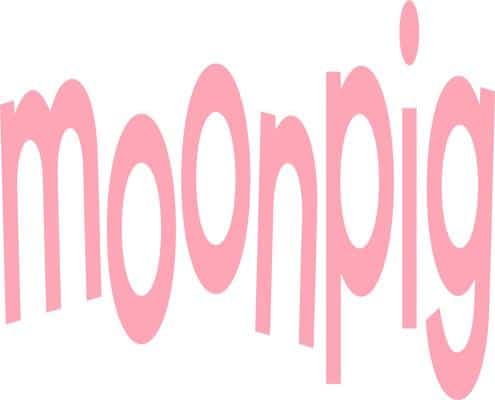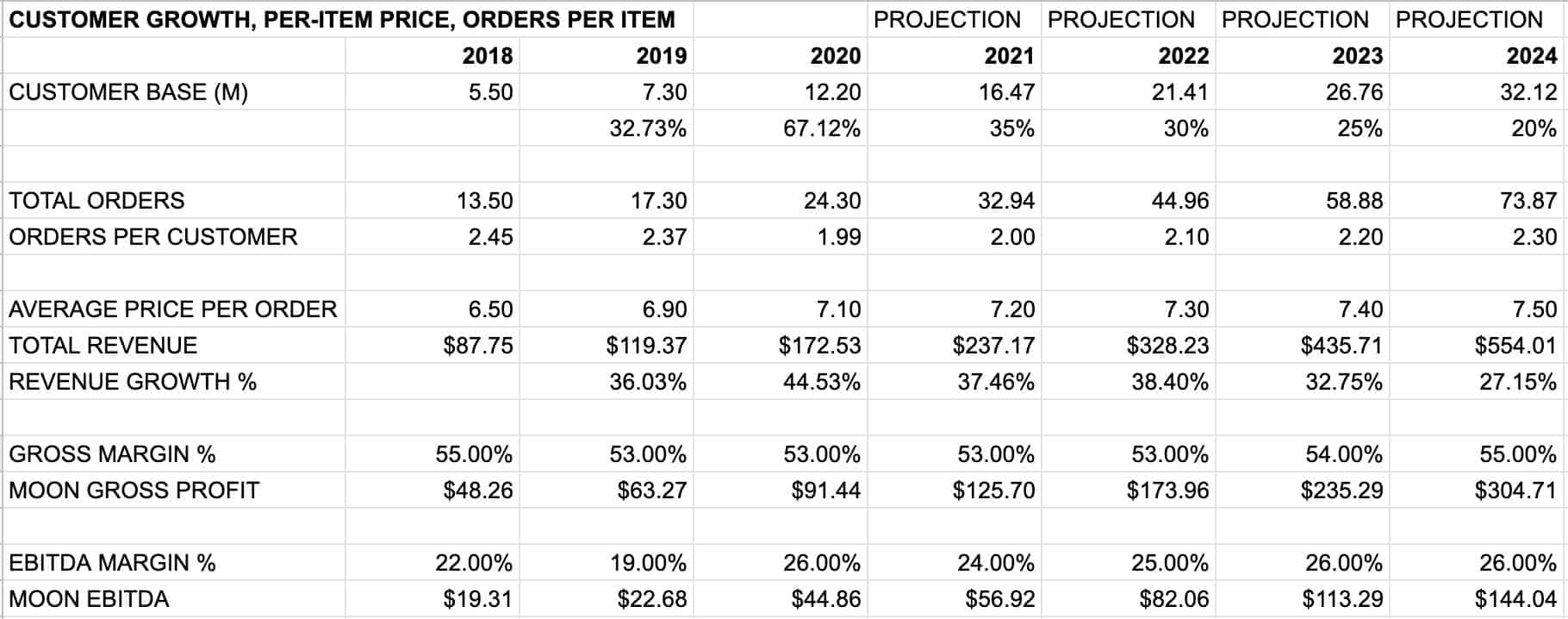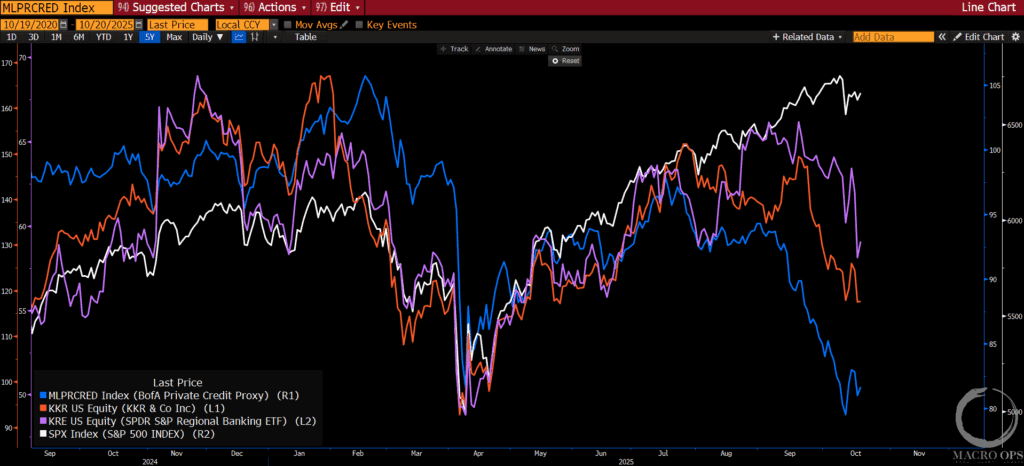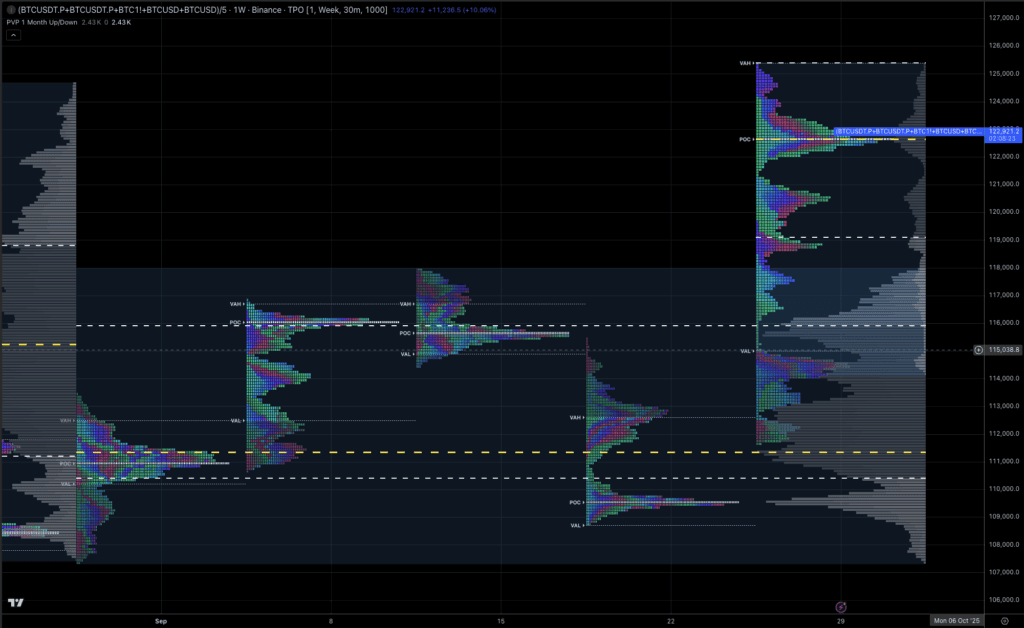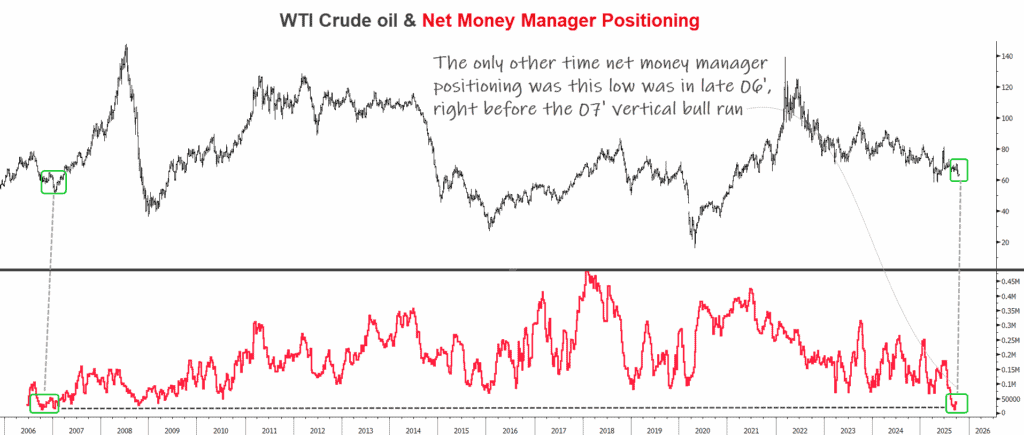Moonpig (MOON) is a leading online greeting card and gifting business, comprising the Moonpig brand in the UK and the Greetz brand in the Netherlands. In both markets, MOON is the online market leader in cards, holding a 60% market share in the UK among online card specialists in 2019 and a 65% market share in the Netherlands among the top three online card players in 2019.
MOON offers an extensive range of cards/gifts, personalization features, and next-day delivery. These traits have enabled MOON to develop a large and loyal customer base efficiently and profitably, demonstrated by its 12.2 million active customers as of 31 October 2020 and strong customer retention, with 78% of the Group’s 2020 revenue derived from previously acquired customers.
There are three main segments within gifting/cards: cards, card-attached gifts, and standalone gifting. MOON is the clear market leader in the UK and Netherlands, commanding 60% and 65% market share in online specialist card retailers.
MOON stands ready to capture the card market and the card-attached gifts market (worth ~GBP 24B). The total gifting market is ~GBP 57B.
Here’s why we’re attracted to MOON: Online penetration rates for cards/card-attached gifts is 10% in the UK and 13% in the Netherlands. Such low penetration rates mean MOON has a long runway to expand its customer base as more people create and buy personalized cards online for their friends, co-workers, and loved ones.
Online card-making allows individuals to create the perfect card for every occasion. MOON provides customization you can’t get in a brick-and-mortar store. And since they offer next-day delivery, even terrible gift-givers can look like thoughtful geniuses.
You can buy MOON for ~14x our estimated 2024 free cash flow at the current stock price.
Why People Buy Cards & Why They Love Receiving Them
Gifting cards is a beautiful business with durable, emotional advantages not shared by most products. Customers engage with gifting card companies when they need to impress a loved one, find the perfect attachment to another gift, or show someone they’re thinking of them.
People love receiving cards. It’s one of the few physical items that’s survived the digital-first technology wave. So what is it about physical cards that make people write them? And what is it about cards that make the recipients love them?
Physical cards mean more to people than other forms of communication. In an age of quick-burst email and massive group texting, a physical card is a piece of antique art.
People save cards for decades because they mean something that an email or text can’t convey. Think about the movie The Notebook for a second. Which depiction sounds better:
“I wrote you 365 letters; I wrote you every day for a year.”
Or
“I texted you 365 messages; I emailed you every day for a year.”
Digital-based communication doesn’t have the same romantic unction — something NFT-digital art fans don’t want to hear.
The value of a physical card lies in its exclusivity to the recipient. One study showed that people receive (on average) 100 text messages and 100 emails per day. Moreover, a 2018 NY Times article noted that first-class mail items (I.e., cards) sent through the Post Office declined 50% in the last decade. Americans receive ~10 pieces of personal mail per year (or 0.000274 pieces for every email received).
Another study showed that mothers generated far greater emotional stimulation when receiving physical, handwritten cards than an email (emphasis mine):
“The electrical activity in the mums’ brains saw a greater positive emotional response to handwritten letters and cards when compared to electronic messages such as social network messages and emails.
In the first image you can see two of the wired up mums looking at a thank you ecard. The screen on the wall behind them shows the emotional activity created in the brain, the brightly coloured peaks show that there is some background emotional activity, but nothing that shows great pleasure.
This second image shows what happens when the same message is handwritten in a card. Here we see it is evident from all the coloured peaks that reading the card has had a far more positive impact on the subject’s emotional brain activity.“
Physical cards will continue to hold their value as MOON allows customers to create the perfect personalized card for any occasion and person.
UK Gifting Cards: A Resilient & Non-Cyclical Industry
Sending and receiving cards is ingrained in UK culture. According to the MOON Prospectus, 87% of UK adults that purchase/send a card send ~20 per year. Here’s the breakdown of the type of cards sent: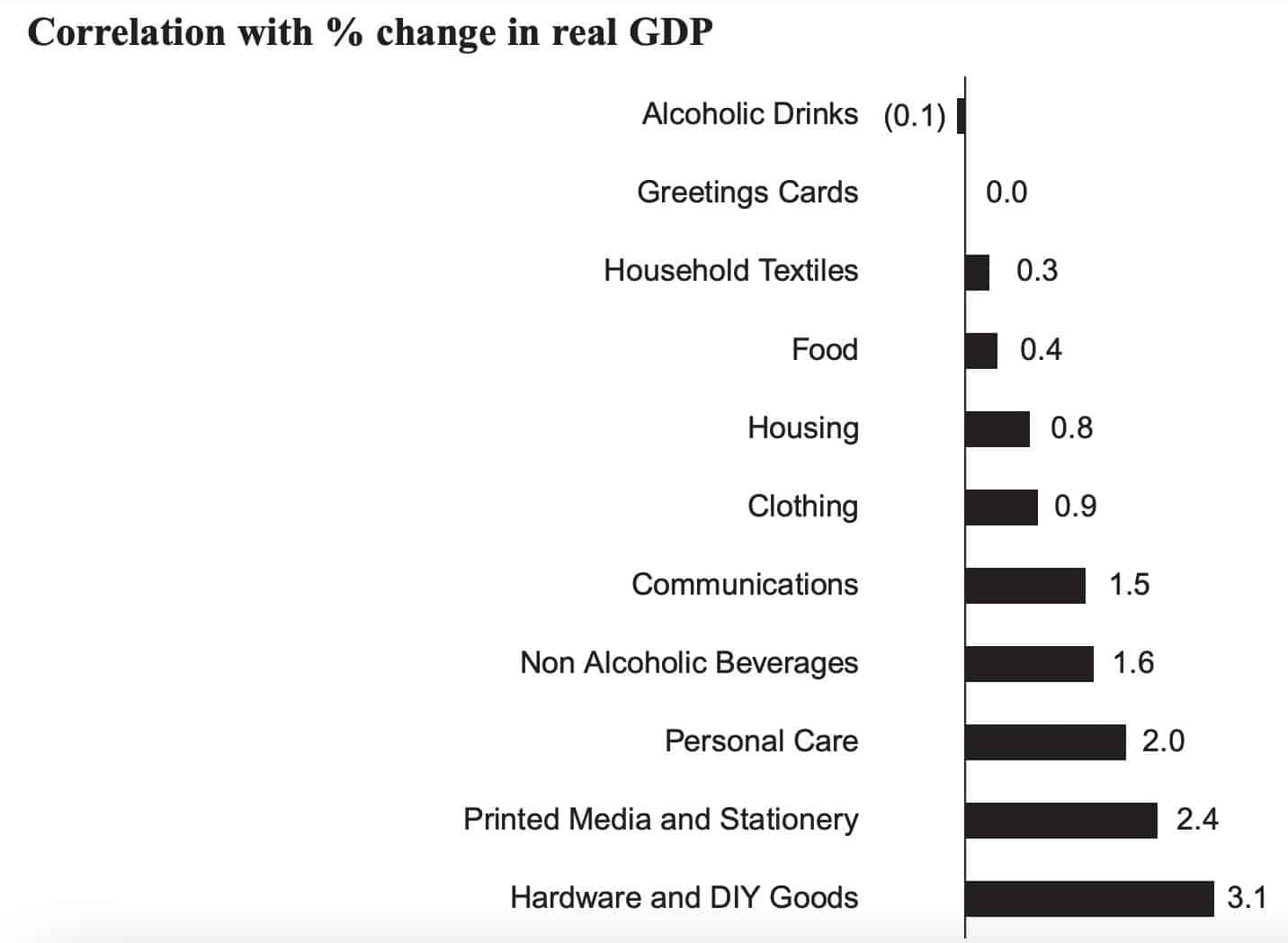
- 11% for Christmas
- 10% for Spring seasonal occasions (Mother’s/Father’s Day, Valentine’s Day, and Easter)
- 79% for everyday events (birthdays, weddings, funerals, etc.)
- The average UK Moonpig customer sends 24.2 cards per person per year.
The great thing about gifting cards is that it’s an annuity-like product. People that buy cards for family/friends will buy cards every year. We see this in MOON’s customer cohort data. 78% of the company’s 2020 revenue came from prior years’ customers.
Plus, the greeting cards market has a zero correlation with GDP growth (see above).
MOON Is The Obvious Online Choice For Gifting Cards
The card market is moving online. From 2016 – 2019 the online cards market grew 1.3x faster than online cosmetics & toiletries, 1.8x more quickly than online homewares, and 1.6x faster than online clothing. Despite this growth, online sales represent only 10% of the total card market.
Over the next few years, online sales should grow at 12.5% CAGR and command ~20% of the card market (12x the 1.1% average annual growth for the total card market).
COVID certainly helped the transition to online card sales, which grew 125% YoY from mid-March to August 2020. It’s also important to note that MOON has a long runway to capture significant customer “card” share.
Like we mentioned above, the average UK card customer purchases/sends 24 cards a year. Of those 24, a mere three cards are from the MOON platform.
There are obvious benefits to buying gifting cards online (I.e., MOON) versus brick-and-mortar. Take purchase data, for example. MOON has 160M in historical transaction data.
That data allows them to curate what cards their 12.2M active customers would like for various occasions. This data also enables MOON to offer personalized reminders to its customers for special events like birthdays, anniversaries, etc.
Data creates a sticky product in an otherwise commoditized space.
Like Stitch Fix (SFIX), MOON learns about your likes, humor, and other attributes to continually curate the best types of cards for all your occasions. This type of customer engagement has led to an 86% brand awareness within the UK and a 74 NPS rating.
An App-First Business
The company outlined its plans as an “app-first” business in its IPO Prospectus. An app-first company’s goal is to funnel all sales and customer interaction into MOON’s mobile app.
MOON’s app offers augmented reality card selection, personalized handwritten messages, and faster checkout times compared to its website. Customers that use the app also purchase more cards. At the end of 2019, customers who downloaded the app purchased 15% more cards than strictly web-based customers.
Let’s examine the MOON experience soup-to-nuts.
The MOON Experience: From Home Page To Checkout
MOON’s website has a beautiful UI/UX. It’s light, pink, and sports great fonts. New customers viewing the website receive an alert to get a free card when you set three reminders. When members log in, they see a personalized homepage with product recommendations and targeted promotions.
The company built its search engine in-house using its 160M+ purchase history insights. For example, when a customer searches for “Mom’s Job Promotion,” the results show the most relevant cards, not the most popular. This search engine gets incrementally better with each new search and purchase.
MOON’s worked on this search engine, and it shows. Customers use the search engine 75% more in 2020 than they did in 2018. In turn, conversion rates from customers that found products via search engine increased 54%.
After finding the card of their dreams, the customer can customize it with personalized images, texts, and fonts. It’s at this point you can turn the card into a genuinely personalized creation.
Before heading to the checkout, MOON cross-sells the customer with a “carousel” of additional gifts. Such gifts are personalized based on the customer’s past purchase history and the type of card they selected. For example, MOON cross-sells Christmas-related gifts with their Christmas cards.
Once you’ve placed your order, MOON prints the card on demand at either its Guernsey or Amsterdam facilities; the company also uses third-party facilities to fulfill attached gift orders.
Types of Cards & Customers
MOON sells three types of cards:
- Personalized photo: cards where a customer inserts their image(s) and text.
- Personalized wording: cards with personalized text on the outside of the card.
- Ready-made: ready-made cards without any customer personalization on the cover.
The company has 22,000+ designs for customers, up from 17,000 in April 2020. Rapid design growth is partly due to the company’s ability to create and release new designs quickly. For example, MOON had Diwali-themed cards ready in 14 days from start to release.
Cards come in standard, large, and giant. Giant cards are a great way to cross-sell a customer and make an impact on the recipient.
Let’s talk about customers.
MOON is a hit with 12.2M active users as of October 31, 2020. The company’s grown its user base 122% since 2018 (5.5M customers). More than 50% of MOON’s customers use the card maker for at least two years. Retention rates should expand as more customers use MOON’s service and grow its data, creating better search/recommendation algorithms.
Narrative To Numbers
In 2020 MOON processed 24.3M orders from 12.2M customers with a GBP 7.1 average order value. That translates to GBP 173M in revenue. MOON’s ‘Moonpig’ brand generated GBP 126.5M, with MOON’s Netherland’s brand ‘Greetz’ doing GBP 46.5M. Orders were up from 13.5M in 2018. Looking deeper at the income statement, we find a few hidden gems.
First, 35% of MOON’s revenue comes from attached gifts. These are usually higher-margin add-ons that raise the customer’s average order price. The attached gift revenue is 600bps higher than in 2018, signaling an improved recommendation algorithm or increased market share in attached gifts.
Second, MOON’s leading brand ‘Moonpig’ is a much better business than its sister brand ‘Greetz.’ On a standalone basis, Moonpig does 56% gross margins and 32% EBITDA margins. Yet you wouldn’t know it because ‘Greetz’ does 44% gross margin and 10% EBITDA margin.
Both brands combine to generate substantial, asset-light free cash flow with 115% cash conversion rates.
Looking Ahead: The Next Five Years
The tailwinds are here for increased online adoption of greeting/gifting cards. Online penetration rates should expand from 12.5% to 20% over the next three years. And with 63% of the online card market in the UK and Netherlands, MOON is best positioned to capture this growth.
There are three levers MOON can pull over the next few years to juice revenues and profits:
- Customer growth
- Orders per customer growth
- Price per order growth
Below are our assumptions on these three levers:
If we’re correct in our above estimates guesses, we end 2024 with GBP 144M in EBITDA, GBP 100M in after-tax earnings, and GBP 110M in FCF.
In other words, you can buy MOON today for ~15x our 2024 estimate of after-tax earnings and <14x EV/FCF. Not bad for a business growing top-line revenue 25%+ while taking market share in an ever-expanding online category with 86% brand awareness.
Why The Opportunity Exists
There are a few reasons why the opportunity exists. First, MOON is a newly issued IPO and started trading on the LSE on February 2.
Second, MOON recently split from Horizon Group, which was a conglomerate of Moonpig and Photobox. In the short term, MOON will incur added costs that it used to share with Photobox. But the advantages they gain as a standalone entity far outweigh those costs.
Finally, MOON is susceptible to the “But what if [Amazon, RedBubble, etc.] enter this space?” question. It’s a valid question but fails when you consider the data advantages and brand awareness MOON has with its customers and online card-making.
The MOON bull thesis rests on the simple claim that it’s easier to find the perfect card on Moonpig than anywhere else on the web, full stop.
The company should continue expanding its user base, cross-selling successfully, and increasing the average price per order. In doing so, MOON will increase gross and EBITDA margins while further bolstering its data flywheel against other online/offline card makers.

